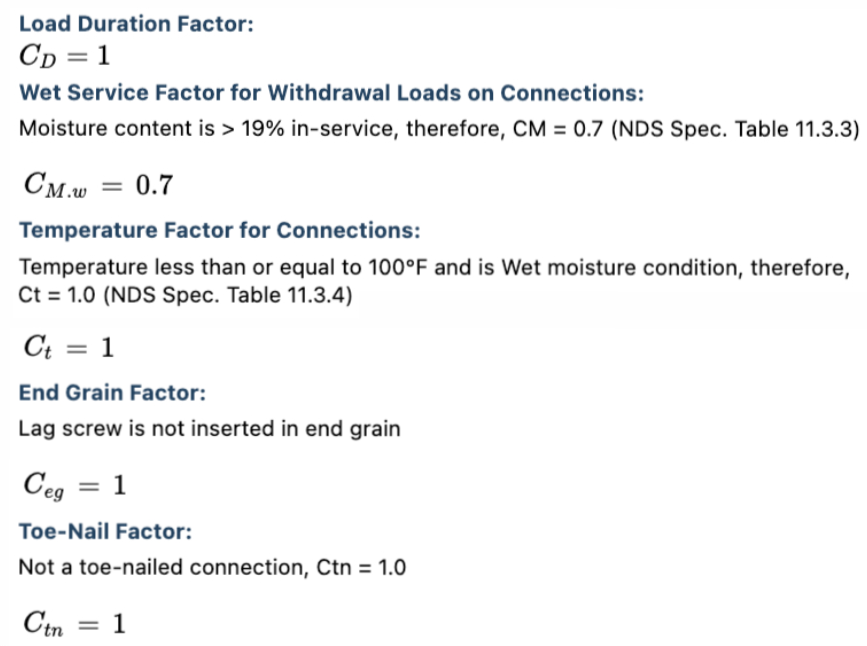Lag Screw Connection Design
- nick8284
- Jul 26
- 2 min read
Introduction
Lag screws are widely used in timber construction to transfer loads between wood members and steel plates or anchorage points. Unlike bolts, which typically act in shear, lag screws are often relied upon for withdrawal resistance — the ability to resist tension forces pulling the screw out of the wood. Properly designed lag screw connections ensure safety, prevent brittle pull-out failures, and maintain the structural integrity of wood-framed systems.
In this post, we’ll walk through the essentials of lag screw withdrawal design according to the National Design Specification (NDS 2018). We’ll cover the key factors that affect withdrawal capacity, the governing equations, and the adjustment factors you need to consider for a code-compliant design.
The Essentials of Lag Screw Connection Design
Lag screw withdrawal capacity is governed by the mechanical interlock of the screw threads with the wood fibers.
The NDS provides provisions for calculating withdrawal design values based on:
Wood density (specific gravity)
Lag screw diameter
Thread penetration length
Load direction (parallel or perpendicular to grain)
Adjustment factors for service conditions

Key Factors in Lag Screw Connection Design
1. Load Identification
The process begins by defining the design load acting on the lag screw — usually tension in the screw’s axis. Use ASCE 7 load combinations with LRFD or ASD provisions for design withdrawal resistance.
2. Material Properties
Wood Member: Design values depend on the wood’s specific gravity and orientation relative to the load (parallel or perpendicular to grain).
Lag Screw: Common sizes range from 1/4 in. to 1 in. in diameter. Larger diameters provide greater withdrawal capacity.
3. Thread Penetration
Only the length of the threaded portion embedded in the main member contributes to withdrawal resistance. NDS requires a minimum penetration for the screw to be effective.
4. Detailing and Spacing
Maintain minimum spacing and edge distances per NDS Table 12.5.1A.
Ensure the lag screw is installed properly (pilot holes, full thread engagement, and proper torque).
Practical Applications for Lag Screw Connections
Lag screw withdrawal resistance is critical in:
Ledger connections (deck ledgers to house rim boards)
Tension tie-downs for uplift
Anchorage to steel plates or masonry
Retrofit strengthening of timber jointsOptimize for cost and performance with clear span and unbraced length considerations.
Example Problem
(Solutions Provided Using CalcBook) Problem Statement:

Design Basis:

Design Inputs:

Fastener Penetration Length:

Nominal Capacity:

Adjustment Factors:

Design Withdrawal Strength:

Conclusion
Lag screw withdrawal design is a vital component of timber connection design. With many variables to account for — from wood density to adjustment factors — following NDS provisions systematically is essential.
CalcBook streamlines this process by automating lag screw connection design in withdrawal, providing:
Transparent NDS-based calculations
Clear factor breakdowns
Professional deliverable-ready documentation
👉 Try CalcBook today for fast, accurate timber connection design.



